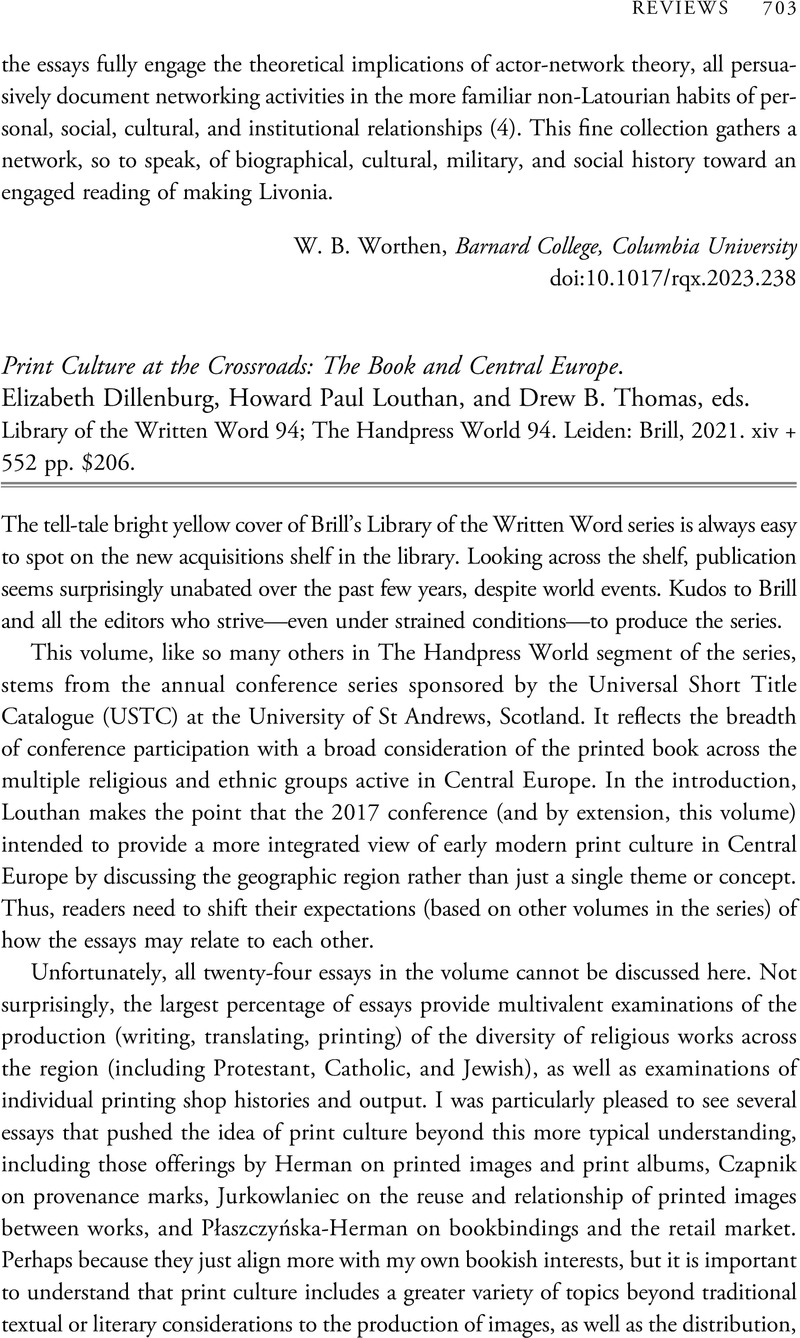No CrossRef data available.
Article contents
Print Culture at the Crossroads: The Book and Central Europe. Elizabeth Dillenburg, Howard Paul Louthan, and Drew B. Thomas, eds. Library of the Written Word 94; The Handpress World 94. Leiden: Brill, 2021. xiv + 552 pp. $206.
Review products
Print Culture at the Crossroads: The Book and Central Europe. Elizabeth Dillenburg, Howard Paul Louthan, and Drew B. Thomas, eds. Library of the Written Word 94; The Handpress World 94. Leiden: Brill, 2021. xiv + 552 pp. $206.
Published online by Cambridge University Press: 25 July 2023
Abstract
An abstract is not available for this content so a preview has been provided. Please use the Get access link above for information on how to access this content.

- Type
- Review
- Information
- Copyright
- Copyright © The Author(s), 2023. Published by the Renaissance Society of America



